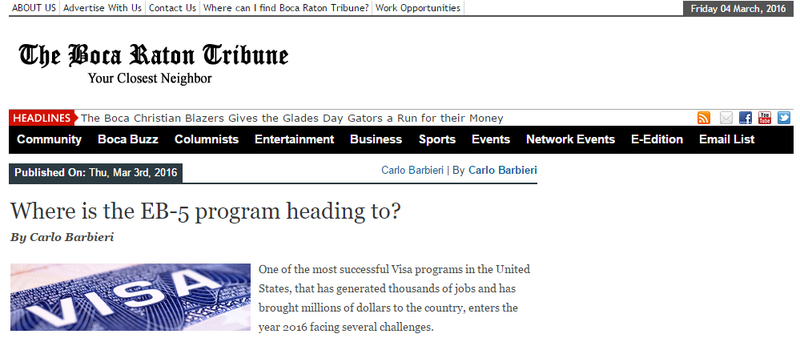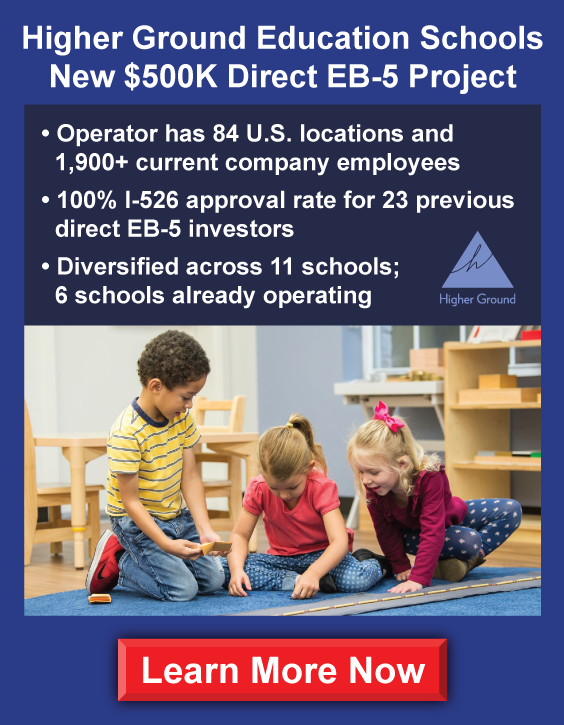One of the most successful Visa programs in the United States, that has generated thousands of jobs and has brought millions of dollars to the country, enters the year 2016 facing several challenges.
During a recent seminar organized by NES Financial, vital information and crucial analysis were shared to those who attended, by leading specialists in the EB-5 program.
According to information provided by clients of NES Financial, who have first-hand experience with the EB-5 program and can easily reflect how the program is performing as a whole, the increase in applications of the I-829 grew 10% from last year, reaching 2,767 in 2015
There was also a 32% increase in applications for the I-526, reaching 14,373 in 2015, which provided for a large number of new cases, and as a result, an increase in the number of pending cases.
The Regional Centers, that have been the base of this growth, experienced a more notable increase: 88%, given that there are currently 1,108 active Regional Centers in the United States.
Even though the USCIS has added 100 new employees, with a promise of hiring an additional 100, this number has not helped in any way the development of the EB-5 program. Today we have approximately 17,000 I-526 applications pending, which represents an increase of 40% compared to 2014.
Consequently, the average processing time for a new application has passed 15 months, which for the time being, signifies an increase of 10%.
With respect to the I-829 applications, there are currently 4,000 cases pending, reflecting a 100% increase compared to the previous year.
Similarly, the processing time for I-829 applications has reached 15 months, doubling the time from the previous year.
Highly competent companies that specialize in all services related to Visa services, such as NES Financial, have enjoyed significant growth. The company’s esteemed “Intelligent Suite Services” has seen a 52% increase, while their EB-5 projects have grown an incredible 72%, counting on 21 partners participating in the Medallion Program, a program created by NES to recognize partners that provide excellent service.
At any rate, we saw an imbalance in the initial goals of the EB-5 program to bring resources and jobs to underdeveloped areas. Up until 2015, 22% of the projects were concentrated in New York, 18% in Florida and 14% in California.
If we take into consideration the value of the funds invested in such projects, these numbers become even more significant. New York would receive 45% of the invested capital, Florida 13%, California 12% and Texas 6%. Even though the number of projects are disproportionately allocated: New York 22%, Florida 18%, California 14% and Texas, 8%, it’s worth noting that New York has only 7% of the Regional Centers, California 19%, Texas 6% and Florida 8%.
With respect to what developers consider to be the most desirable industries for their projects, we have observed considerable changes from 2014 to 2015. Medical/Health Care fell from 16% to 13%, while Casinos and Hotels grew from 18% to 27%. Retail and restaurants fell from 10% to roughly 6%. Multi-Family units, on the other hand, experienced spectacular growth, from 6% to 22%.
In relation to incentive funding, we saw that China, although still by far the largest source of investors, has fallen in terms of importance, and developers have realized that the Chinese have been losing interest in EB-5 projects, given the painstakingly slow process and the costs they must incur through the use of agents. Furthermore, the American Embassy is taking close to two years to grant an interview. Latin America has gained in importance when it comes to funding EB-5 projects, as it currently represents the region with the highest growth rate. Other Asian countries have also surged in terms of incentive funding.
China has recently pointed out the increasing costs of agents that charge their clients up to 3% per year of the funds invested.
The biggest challenge this year among entrepreneurs and Regional Centers is to do a more efficient job in conjunction with the American Congress to better understand the industries of investment. By doing so, they can work together on revising legislation, prior to the deadline of September 30, that will diminish risks and incentivize business growth.
There is much to be improved within the Regional Centers and the obligations they must fulfill for their respective projects.
Weeding out the incompetent and dishonest is absolutely imperative, as well as to create a system of accountability among the parties involved.
This subject can’t easily be resolved by writing a few lines nor a few articles, however this is our attempt to offer a birds-eye view of the issues at hand.
http://www.bocaratontribune.com/bocaratonnews/2016/03/where-is-the-eb-5-program-heading-to/
Mentions
States
- California
Securities Disclaimer
This website is for informational purposes only and does not constitute an offer or solicitation to sell shares or securities. Any such offer or solicitation will be made only by means of an investment's confidential Offering Memorandum and in accordance with the terms of all applicable securities and other laws. This website does not constitute or form part of, and should not be construed as, any offer for sale or subscription of, or any invitation to offer to buy or subscribe for, any securities, nor should it or any part of it form the basis of, or be relied on in any connection with, any contract or commitment whatsoever. EB5Projects.com LLC and its affiliates expressly disclaim any and all responsibility for any direct or consequential loss or damage of any kind whatsoever arising directly or indirectly from: (i) reliance on any information contained in the website, (ii) any error, omission or inaccuracy in any such information or (iii) any action resulting therefrom.




